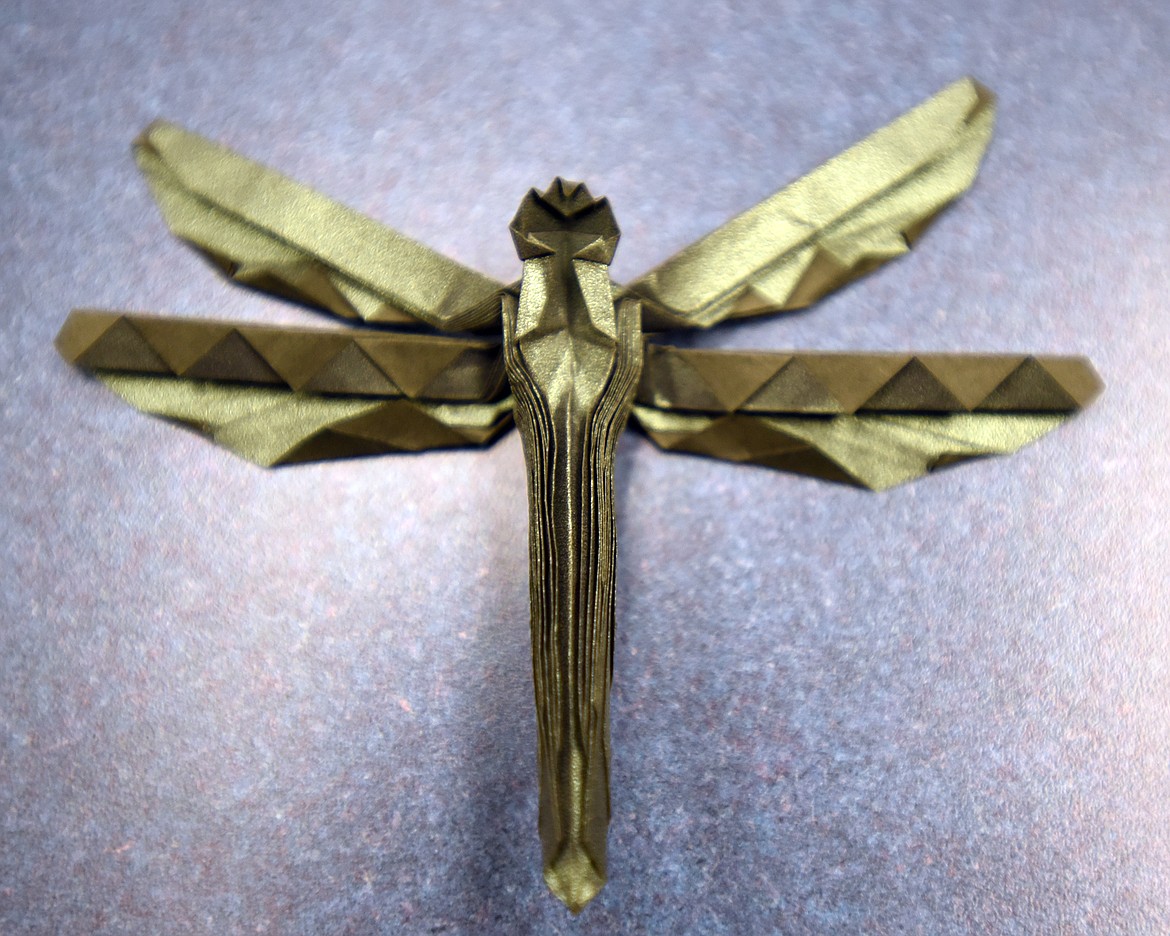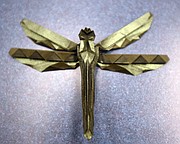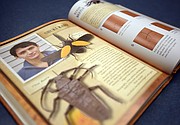Origami artist, designer to publish third book
A piece of paper can become anything Shuki Kato wants it to be. It’s all in knowing how to fold it.
Kato, 27, is well-known in the world of origami, the ancient art of folding paper that derives its name from the Japanese words “oru” (to fold) and “kami” (paper). He discovered origami when he was about 6, and has been folding paper continuously since he received his first origami book, “Origami Sea Life” when he was 9, the year his family relocated from Bellingham, Washington, to Kalispell.
“I started designing my own models early, but the majority of them came about by just doodling — folding a sheet of paper without any actual specific outcome in mind,” Kato said.
He kept at it, perfecting his designs, mostly of animals and insects. In origami there are no cuts to the paper, no glue, only folds. In 2004 he got his hands on a copy of origami master Robert Lang’s book, “Origami Design Secrets,” and dove headlong into designing.
“It was fundamental in my own quest of becoming a better origami designer,” he said about the book.
He was also inspired by Lang, one of the foremost origami artists and theorists in the world.
“He’s my idol,” Kato said, noting Lang’s study of the mathematics of origami. “He does lots of math formulas. I do a lot of trial and error.”
Kato kept collecting books about the art and has amassed a collection of more than 30 origami books.
“Most books are diagrams,” he said.
“Being a designer is very cool. You learn designing over the years,” he said. “You stick with your style, but you still want to learn.”
Origami can involve dozens or even hundreds of steps for a single piece of art. Kato’s giraffe design, for example, has 209 separate steps.
Over time he began using Flickr, an image- and video-hosting website, and DeviantArt, an online artwork website, to post photos of his designs. And origami aficionados began to take note of Kato’s extraordinary ability. The online platform enabled Kato to get feedback about his designs and observe what other origami artists were doing.
When Kato posted his completed beetle design on the Origami USA website, it caught the attention of Lang, who then opened the door to Kato’s first book-publishing opportunity. Lang recommended Kato’s designs for a 2013 book titled “Origami Masters Bugs,” which features origami models from seven different origami artists, including two of Kato’s models. That got him noticed in a big way in origami circles and he was invited to origami conventions in Tokyo, Japan, and Seoul, South Korea, that same year. That was a big foot in the door for more exposure and networking.
Kato’s second book, “Origami City,” was a collaboration with Jordan Langerak that featured a variety of famous buildings such as the Eiffel Tower, the White House and the Louvre in Paris.
“The Sydney Opera House was my favorite,” he said.
The book showed origami depictions of some famous buildings, but not the design patterns for all of them, in an effort to be an aspirational tool for origami artists. But without the designs, some people “felt ripped off,” Kato said. He reviewed his own book on Amazon to explain the rationale for publishing photos without design patterns.
Kato’s third book, “Origami Nature Study,” is available for pre-order, with a release date in early December. It includes a compilation of his best designs over the past several years.
“For people who have known my work online, they’ve been asking for a book,” he said. “It was easily the most difficult book [I have completed.] There are lengthy sequences.”
There are only a handful of origami artists in the world who make a living at their craft. Kato would like to be one of those few.
Beyond folding and selling his diagrams, Kato’s other job is working as an assistant at the Buffalo Hill Golf Club Pro Shop. He enjoys golf and he’s a pretty good golfer, his peers confide.
Kato’s family — he has three sisters who also have artistic ability — discovered the Kalispell area when they stopped through on their way back to Washington from a vacation in the Northwest Territory. They loved the Flathead, and Kato’s father, who immigrated from Japan to America when he was in his late 20s, then got a job at Applied Materials.
Some time after Kato completed his high-school education via home-schooling he worked at Applied Materials for eight months doing electrical work — “they teach on the job and I was good at following diagrams,” he noted. But he quit to finish his associate degree at Flathead Valley Community College, work on his origami designs and publish books of his designs. Those who admire his work would say that was a very good career move.










